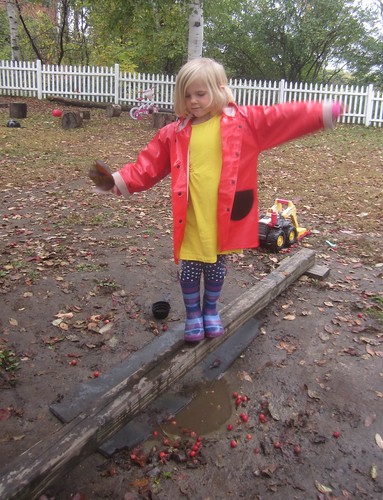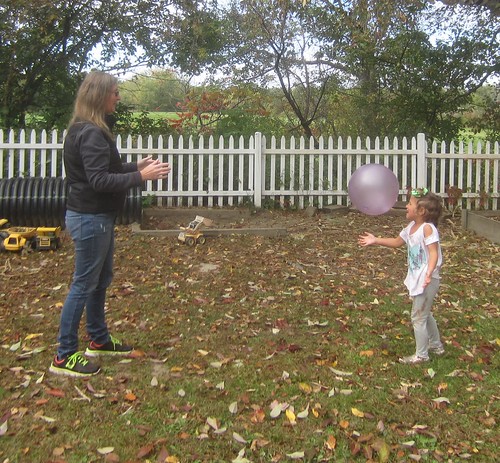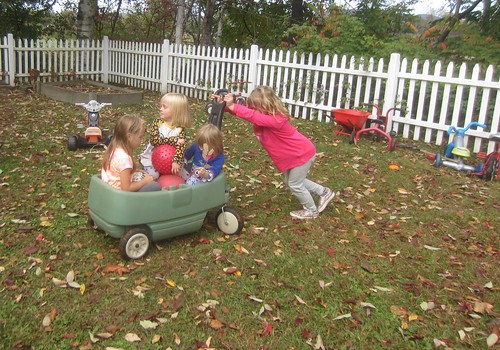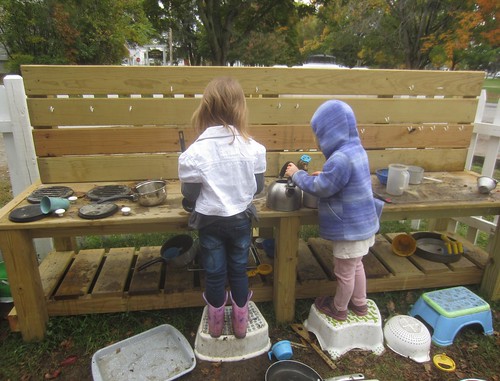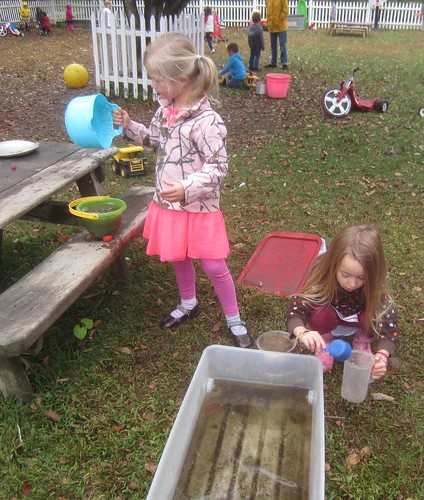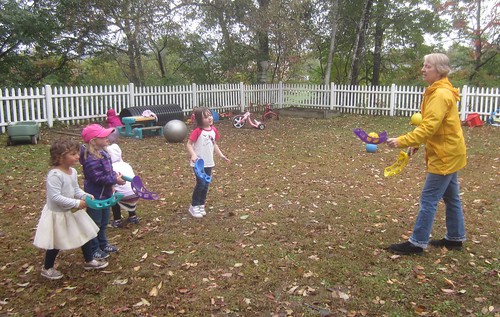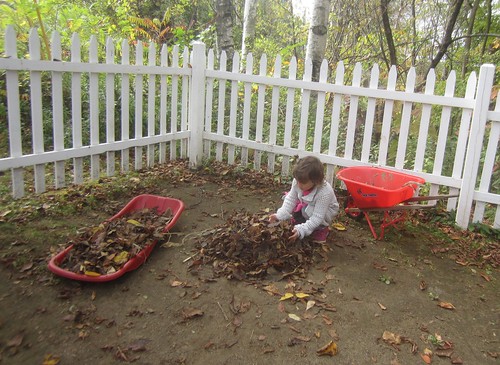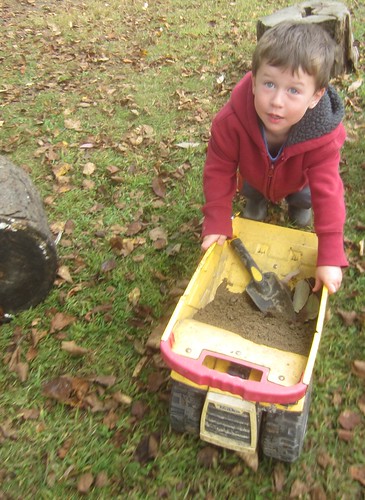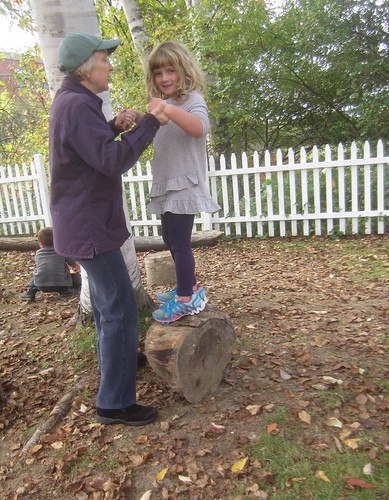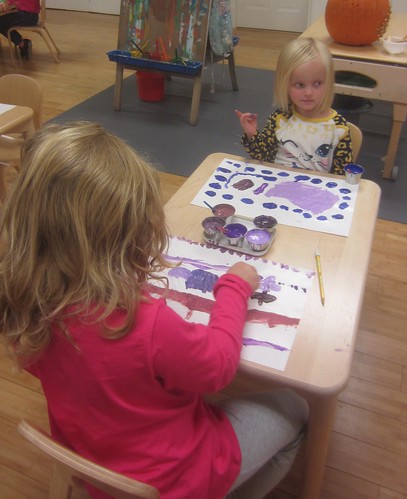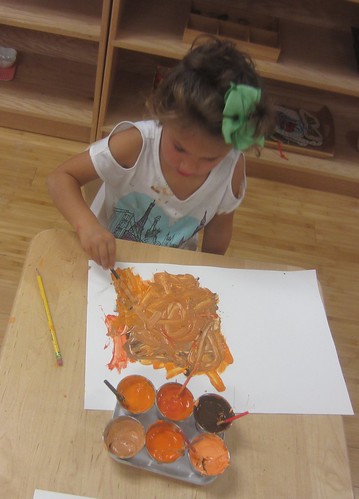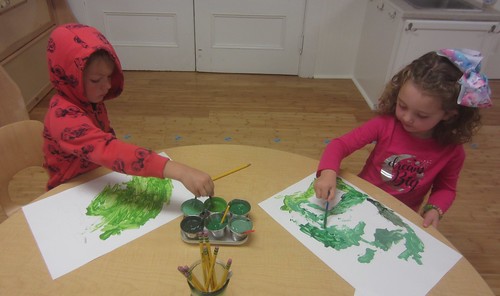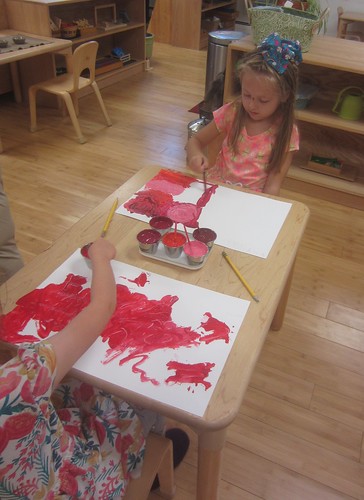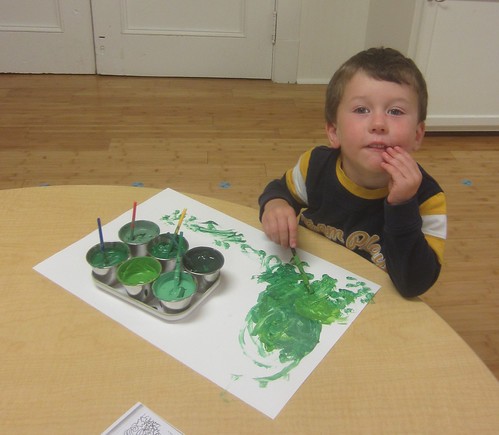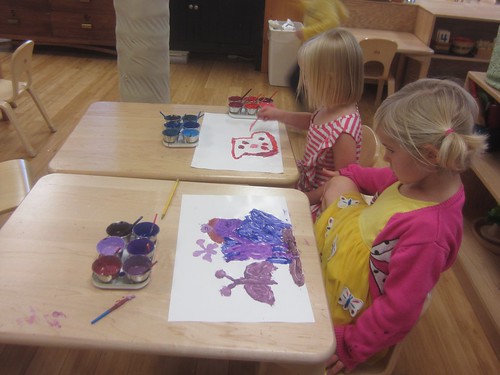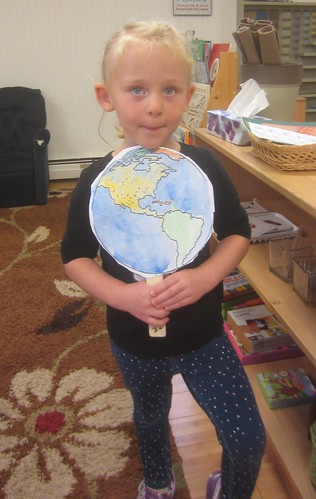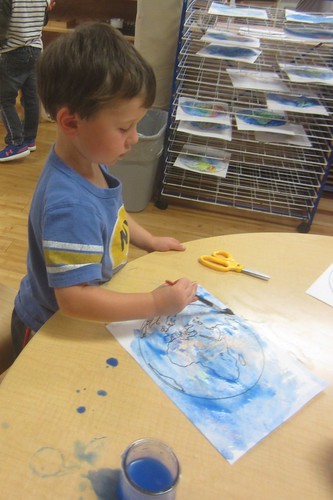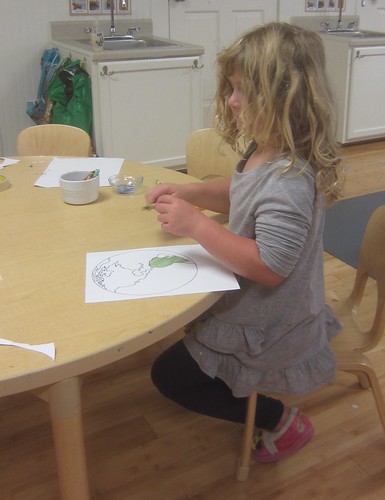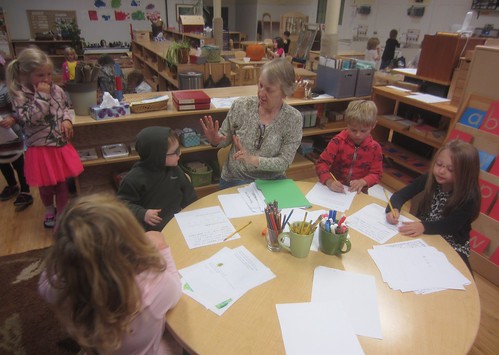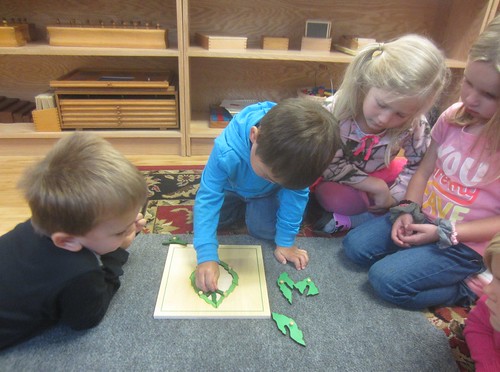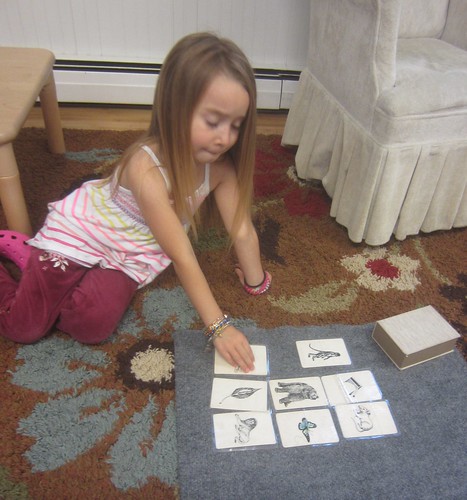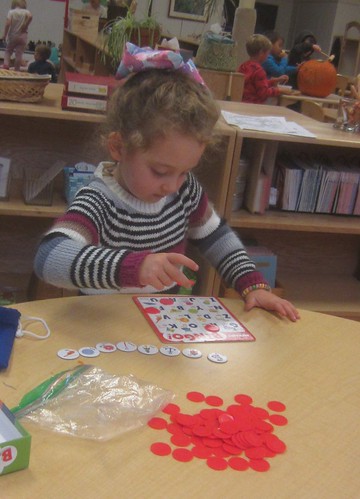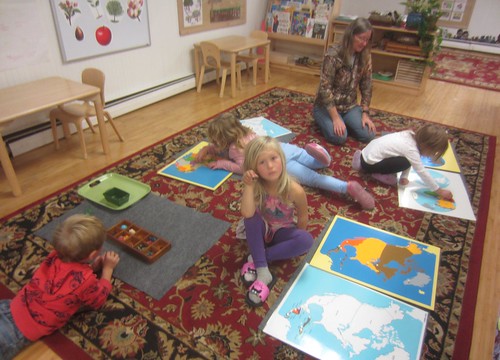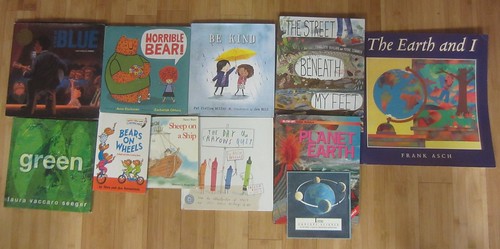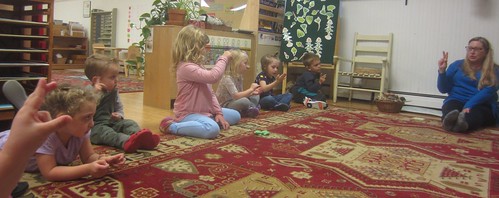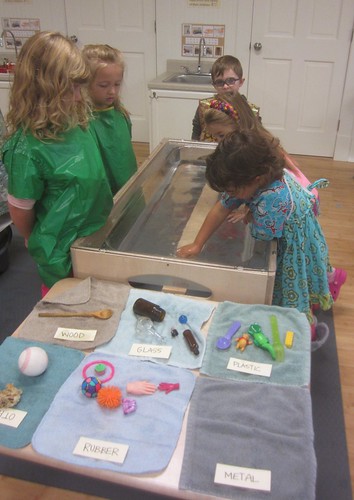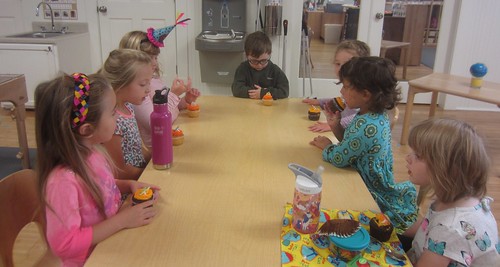It was a cool, dark week, but we took full advantage of the muddy puddles, damp sand, buckets full of rain water, and leaves littering the ground. There were chefs in the kitchen, landscapers gathering up leaves, taggers freezing friends, leaf chasers catching leaves, construction crews hauling sand, bikers pedaling, catchers playing ball, passengers taking rides, and engineers driving the wagon train.
Monday students were introduced to the artist Yves Klein who invented his very own shade of blue, which he used to create monochrome paintings in blue. We learned that mono means one, and chrome means color. The children each selected a color and created their own monochrome paintings. Throughout the week other children used the six shades of a color to paint many works of art.
As we continued to learn about land, air, and water we read some stories about land and water travel; Sheep on a Ship and Bears on Wheels. We did an activity where each child was given an animal from around the world to place on our air, land, water mat. The first time we did this activity two weeks ago we used familiar animals, but this time many of the animals were from various continents around the world, such as a capybara, wombat, giraffe, and wobegong.
We learned that the 7 large land masses on the Earth are called continents. We are practicing a song about the continents to help us remember their names and locations on a map. The continent puzzle maps were introduced, and many students enjoyed taking them apart and putting them back together, a rather challenging project.
The children used the technique of wax resist for a land and water art project. They used crayons to color the continents of the Western and Eastern Hemispheres, then painted with blue watercolor paints to add the oceans. When dry, the children cut the hemispheres out and attached them to a stick.
We read the story Horrible Bear about a girl who is flying a kite, which lands in a bear’s cave. The bear is sleeping and rolls over the kite, breaking it. The girl is very upset and shouts “Horrible Bear” then stomps home in anger. The bear, have been awoken by the girl stomps down the mountain with a plan to get revenge. When the girl accidentally pulls the ear off her stuffed rabbit, she realizes that she blamed the bear for an accident and decides to remedy the situation by apologizing. When the bear arrives at the girl’s house, and she apologizes, all the horrible goes right out of the bear and he comes up with a new plan to be nice. We discussed ways to handle our anger and sadness in appropriate ways, such as asking for a hug, taking deep breaths to calm down, walking away, and apologizing. We also read Be Kind, about a girl who tries to figure out a way to help another student feel better after she spills her juice all over her dress and the other children laugh at her. We shared ideas for ways to be kind to others. We were introduced to Henrietta and Wolfgang, the hen and wolf puppets who live in our classroom. They told us a bit about themselves and how we are each different in our very own ways and how to respectfully ask for or offer a hug and reply “yes, please” or “no, thank you.”
We discussed how people all over the world communicate by speaking different languages. We speak English, but other people speak Spanish, French, German, Mandarin, etc., and some people speak using their hands in sign language. We learned that some people cannot hear, so using their hands to speak is how they communicate. Rose introduced 5 new signs this week. We learned yes, no, please, thank you, and sorry (you can access a video for each sign by clicking on the word).
Our first Spanish class with Zeanny was held Thursday morning. We learned several songs in Spanish. We sang a song about our names and introduced ourselves. We sang cabeza (head), hombros (shoulders) , piernes (legs), pies (feet), and a color song. Zeanny introduced colors with a colored beach ball and colorful scarves. We began to count and learn number names with two stories, one about perros (dogs) and one about animals.
Susan introduced the layers of the earth with 3 songs, 2 stories, and 1 activity. We learned that the outermost part is called the crust, which is mostly rock covered by soil and water, then underneath the crust is the mantle, which is melted rock, then the outer core, which is liquid metal, then the inner core, which is solid iron. Susan showed us a hard boiled egg, peeling away the shell, which represents the crust, then the soft mantle, then the yolk which represents the core. We looked at the fold out book The Street Beneath My Feet and named all the different things we spied down under the sidewalk, including rocks, skeletons, artifacts, caves, insects, soil, magma, etc.
Friday students did a sink and float experiment. They tested lots of different items made of different materials. We recorded which items sink and which float and classified them by what material they are; wood, metal, glass, plastic, rubber, or other. We observed that all wooden things float, and all metal and glass things sink unless they are filled with air or curved like a boat, but will sink once filled with water.
We celebrated our first 6th birthday of the year on Friday! The birthday girl was super excited to share her monster ring and fall leaf cupcakes with her friends. She held the globe while she orbited the candle sun six times while we all listed the seasons and counted the years since her birth. We then serenaded her with the Birthday song and she blew out the candle. Happy Birthday 6 year old!



